The career of Guillermo Kuitca (Buenos Aires, 1961) began at nine-years-old when he entered the workshop Ahuva Szliowicz supported by his mother, Mary Kuitca, a psychoanalyst, but especially by his father, an accountant named Jaime Kuitca. From here, he left at 18-years-old, having turned into a precocious painter; he had his first solo exhibition at the age of 13 and taught painting classes. His interest in film, music, literature and architecture is present in his work. More importantly, his passion in theatre is present. He is the author, director and set designer. His work is included in the collections of major museums including the Metropolitan Museum, MoMA, Tate Gallery ... But the most interesting thing about Kuitca is that, thanks to him, future generations of Argentine artists have formed.
Author: Elena Cué
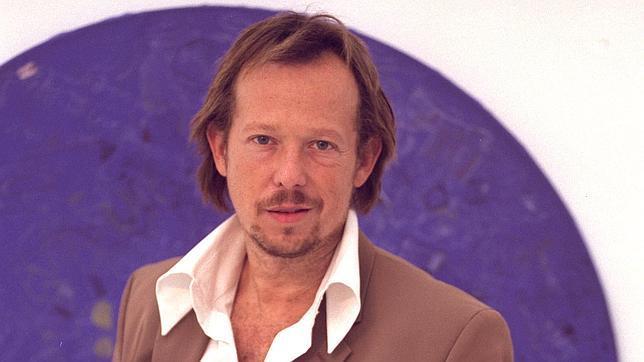
The career of Guillermo Kuitca (Buenos Aires, 1961) began at nine-years-old when he entered the workshop Ahuva Szliowicz supported by his mother, Mary Kuitca, a psychoanalyst, but especially by his father, an accountant named Jaime Kuitca. From here, he left at 18-years-old, having turned into a precocious painter; he had his first solo exhibition at the age of 13 and taught painting classes. His interest in film, music, literature and architecture is present in his work. More importantly, his passion in theatre is present. He is the author, director and set designer. His work is included in the collections of major museums including the Metropolitan Museum, MoMA, Tate Gallery ... But the most interesting thing about Kuitca is that, thanks to him, future generations of Argentine artists have formed. In 1991 Kuitca created scholarships where they study and work in disciplines related to the visual arts.
Elena Cué: With a precocity like yours, what memories remain and who has made the greatest impression on you?
Guillermo Kuitca: Undoubtedly, the figure of my father has been very important in this case. He was very excited when I became an artist. His interventions were very subtle, but I remember when I went to buy the first fabrics, the first easel and first brushes, I always went with him, and I imagine it left a notable mark on me. Many years later when I was already a painter totally dedicated to this and absolutely committed, Dad told me that in his youth he had tried to paint. He was from a humble family, which meant having to steal the hairs from his father's shaving brush as well as cooking oil; luckily things I learned much later, because children are very sensitive to every little thing.
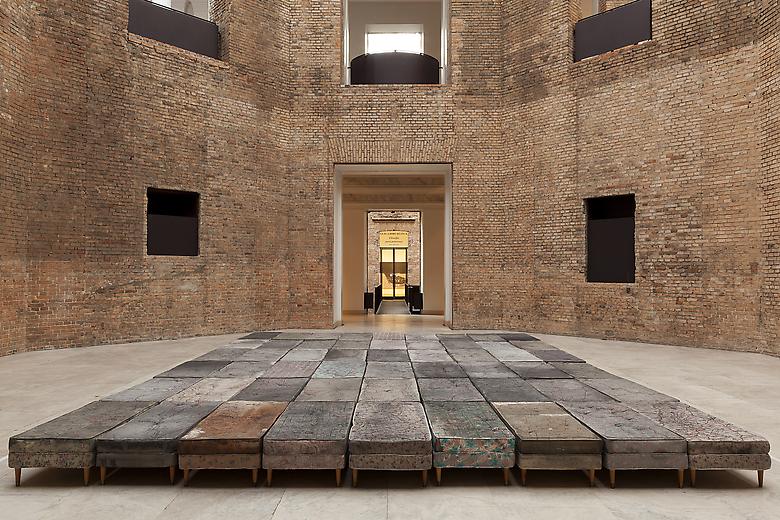
E.C: His pictorial series have changed according to their own rhythm, but also the historical situations; this applies to "Nobody forgets anything" (1982) in pure conflict with the Falkland's war. For this series he locks himself in his studio using whatever material is at hand: doors, wood or fabric. It is a very intimate series but also a political and historical view of the world; depicting the bed as the central image, women and heartbreaking scenes over and over again. The bed is a symbol that has accompanied him in his work as the installation Untitled, 1992, using 52 mattresses painted with maps.
Why the eternal recurrence of this object in your work? Has your concept changed over time?
G.K: I saw the bed as a vehicle that I could use to move through human experience and through my work, as if the bed had wings or wheels, that is to say, the image has neither one nor the other, it is rectangular with legs but has the potential to move through time and space.
There is something very basic in the image that exists as a kind of heart in the works and I think that persists until, I think, 2013 with a big play called "Double Eclipse". This had a number of beds and it is as if there was something from that first experience, from that bed in 1981-1982 that is maintained. Of course my views on this subject are changing, extracting excessive forms of conceptual links: psychological, political, or sentimental things. How to turn the bed into a rectangle as if it were a plan of where life happens instead of the demarcation of a house, of human experience, like taking it to the most essential point possible. But that concept I would say almost survives along those in which is the human experience, birth, death, sex, sleep, illness, reading ... this stunning cluster of intimacies that occur. From the most sublime to the most banal. So I would say that more than the evolution of the concept, it was like taking adhesions that had stuck through time. The bed as pictorial representation is almost like a perfect equation that produces a very simple representation as an absolute inclusion, taking advantage of the huge space.
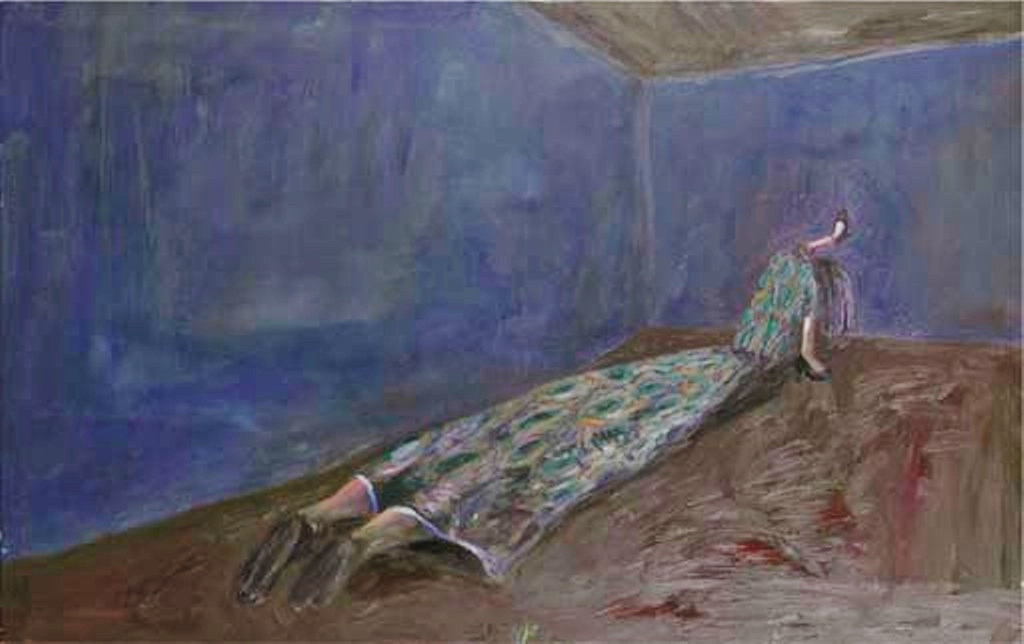
E.C: Psychoanalysis has been present in his life from an early age. His mother and a childhood influenced by therapy sessions have contributed to this, which meetings he went to reluctantly. If the origin of art lies within the subconscious, hidden deep in our personality, this reality finds a way to manifest symbolically, says Freud, through dreams; also by spontaneous writing or scribbles where aesthetics and morals of our consciousness are not involved. Both are used in his works. His "Diaries" series are paintings made on canvas where he scribbles, draws, notes and paints over months of his daily life. These involuntary diaries and oniric aesthetics in many of his works, where the figures live in half-empty spaces with disproportionate scale, surreal disjointed scenes, leave an unsettling impression.
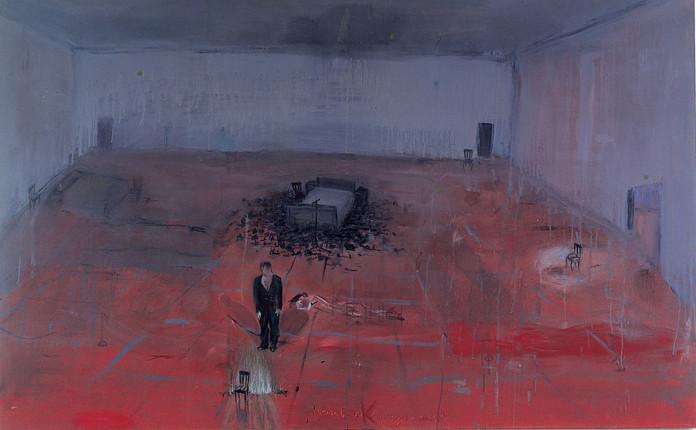
The most intimate, the product of pure thought, emerges in your paintings. Does painting facilitate knowing oneself? How do you feel about displaying these in public?
G.K: Interesting paradox ... because while I like your version, for me, and I guess that for many artists it does not rule out a process of self-knowledge. Without doubt, there is an inner expression brought into play and that is how it becomes accessible. It is also true that for me, the power of the artwork exists in the privacy that is created between the work and the viewer. Therefore, the work is not what is between the viewer and myself, that is, the access to me personally. But I think the strongest aesthetic experience is the relationship created between the work and who looks upon it; therefore I tend to disappear from the scene. I think that trying to look at the work while wondering about the artist, what is its truth, what is its secret etc., is probably losing the richest artistic experience, in generating a particular privacy. That, in general, the painting produces this kind of miracle, which is what I see, what happens to me. Sometimes nothing happens, it's almost like an experience of love; like a secret between the work and I, the individual looking.
Of course it is entirely lawful and I accept all kinds of visions and do not think some are more legitimate than others. However, I believe it is richer to ask oneself whether the artist who made this work is hidden, or vice versa, whether they are revealed in these details. On the other hand, everything is automatic work, for example, on the tables in my Diaries, rather than subconscious. It is automatic work, it is a kind of restless hand which marks things. It is not a test. In that sense, I like it when you think of the environment as rarefied as they are in dreams. But it is also true that there are many more dreams than dream interpretations, and Freudian psychoanalysis and psychoanalytic techniques in something that is already more than 100 years old. This is not to do with the dream, but interpreting the dream. In that sense, one can dream without interpretation and I think the public who visit visual arts, the trained and untrained, either from exhaustion or disinterest, even including the fortunate, have abandoned the permanent temptation to try and interpret the artist or the work.
I think there are thousands of possible entries to a work and perhaps only one of them is interpretation. In my case, I was born in a family where psychoanalysis was very conventional, it was not uncommon. In a city where many people were analyzed, psychoanalysis did not appear as something exceptional; I only saw it as a peculiarity with pros and cons. As you say, I could have been analyzed myself, I was in a situation where the guys here in Buenos Aires in the modernity of the 60s, were sent to the analyst when they sneezed instead of going to the doctor to take an aspirin, everything was considered to be psychosomatic, there was a kind of total abuse of therapy. And no guy liked to have their head messed with. Sometimes, with the access that the public have, the critics are surprising because it is believed that the work conceals oneself and actually substitutes in a way that if you were aware of it, you could probably not do it.
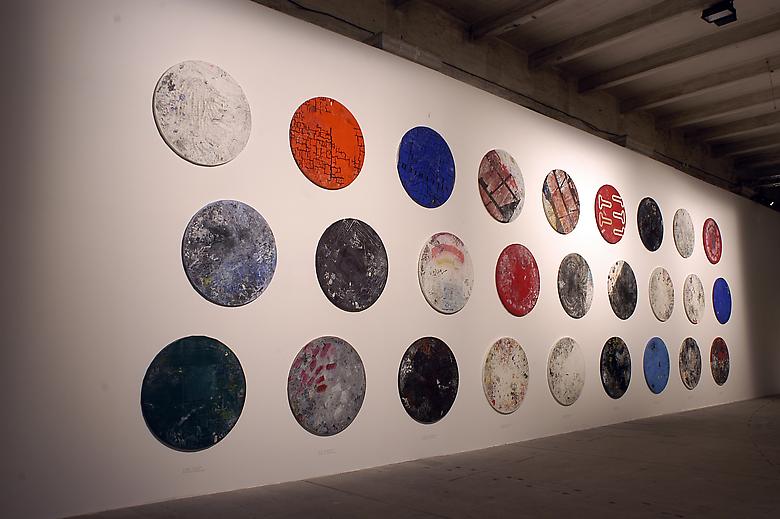
E.C: His work has developed over time with varying central motifs: the first works with distorted figures, quilted beds covered with maps, architectural and city plans, newspapers, maps, the empty luggage carousels at the airport, unclaimed suitcases as representations of the orphan, are examples of what have interested him at various moments.
What is the relationship between the choice of your motifs and your obsessions? Up to what point is art a channel for them?
G.K: I think there should be a very direct line, of course, the work itself is already very obsessive but probably thinking about it is decoded at that time. I sometimes look at my works from the past, and I understand what was in my head at the time of making it. At the time of doing it, I didn't necessarily consider my obsessions, because the process itself is very demanding and absorbing and it is perhaps all that is needed to make a work. I am in dialogue with the painting, in a kind of battle and sometimes this bypasses a reflection of where my head actually is. Anyway, at the time, I am also looking at what connects all of these, and what themes are being projected. When you mentioned all the topics that have been present in my work, there is a huge body of work that has the theatre existing between these sequences of beds, cities, the maps and after, the leap to the luggage carousel. The theatre was a very important issue; somehow I had to make it rotate from the view of the stage to the view of the audience, as a permanent exchange. When the first luggage carousel appeared, it appeared as a backdrop, like a stage platform, almost as if it had nothing to do with with the representation. Of course I was interested in the unclaimed luggage, desolation, but the first luggage carousel was a response to the stage area. Then, as the works acted as signposts, the best one can do is not to resist but to continue on that path.
E.C: So it is only possible to notice these obsessions in retrospect...
G.K: The work is more intuitive. I don't know if I'm a good observer of my work. Of course, I investigate and submit my work to all types of analysis; the cruelest possible. But when I do that, there is an intuitive element that I do not want to lose. If I constantly ask myself what I am going to do then I lose the purity, arbitrariness, intuition and nonsense that are very important moments, in which the work opens up to the other, the viewer. If not, it is always a self-reflection. For me it is essential to concentrate and not to ignore what the work asks me.
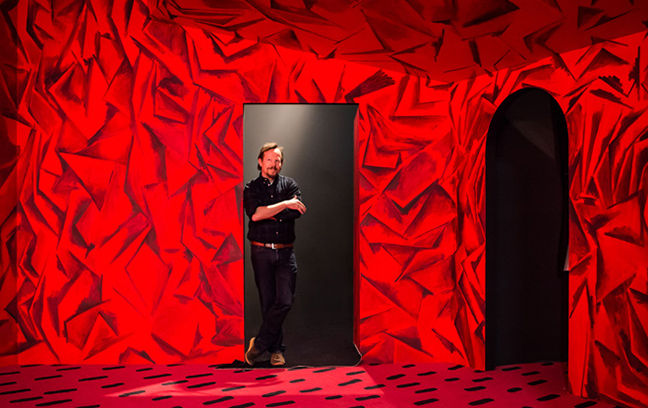
E.C: What is art to you? Do you think art should also have a utilitarian purpose that is intrinsic to our time? Or is it closer to what Schopenhauer said, when describing art as a drug that temporarily eases the suffering produced by our continuous chain of needs and desires, against our will?
G.K: Obviously Schopenhauer's time is not ours, but if art were a drug or balm, as Derrida said the drug is both a cure and a poison, that will become his own utility. In this fragmented world, art in its most sublime expression does not produce experiences that can soothe or solve all our frustrations. In this sense, I do not think that it is ever one hundred percent effective for the human soul, and I do not think that utility is the barrier that makes this impossible.
When we speak about art, I do not know how we do it; as exchange value, as decoration, as thought, as a vehicle of ideas, of all kinds of information, which would not be so negative. It seems that in the world we live in today, we have no chance to convert a single object into something (beyond money) in which we condense a sense of neither profit nor absolute compensation. Art has helped those of us who are close to it, to live, of course. It has broadened our horizons, it has made us a better people to a certain point, or not, but it has helped us to live when we have suffered and suffered and gone through everything that has happened around the world. It is very difficult to give an answer. I think art is still that experience which happens between the work and the viewer, and I think that it withholds some closed meaning. But not because it hasn't been revealed. There are writers who manage to describe their experiences with art, but there is some privacy which is like the heart of art. There is privacy, like a measure of art in which its meaning is enclosed. I don't know if one day we will have access to it, or whether it makes sense to do so.
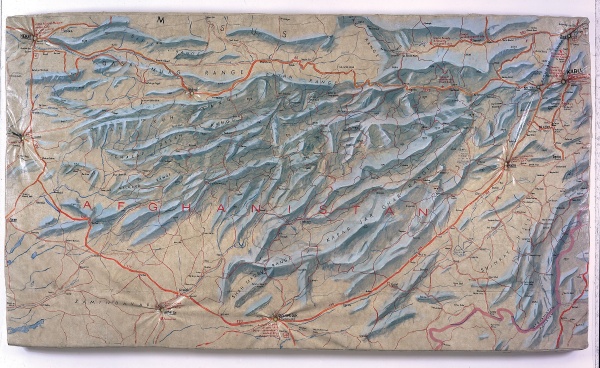
E.C: You once said that you live with enthusiasm but also with despair. Could you tell us, what is your dream now? What have you despaired over?
G.K: Regarding my hopes, I have never created as many projects as I have this year; something that has taken me away from my studio. I guess my dream is to return to and lock myself in my studio and concentrate on my work. Hopelessness has to do with this, at least in recent years when I have felt that things are never resolved, and with the disappointments of those who govern us or the accumulations of power. I fear more the power of accumulation than that of money. Although it is almost the same, it is not exactly the same. That always leaves a bitter taste about the life that I live, and I cannot complain because I am a very privileged person but I cannot be carefree. The hopes always come on a more personal level, starting with this or that project, or for the people around us. When we speak about hopes and dreams, we are reduced to the smaller, personal scale, and when we speak about despair we speak of the world, of hunger ... It's curious how we shrink our hopes to a small scale and how they are exaggerated with despair. In times of crisis, the artist has to play a role that connects disappointment to hope.
E.C: I discovered that you are preparing an artist book with MoMA, could you tell us something about it?
G.K: I am very surprised that you know this. While I was waiting for you, I was working on it. I am developing some ideas, there is something beautiful about this project which is the freedom of the material formatting, images, size, absolute freedom. It is an ideal situation but sometimes people need to recognise the limits in order to know where to go. With the publisher of this project we began to discuss and have ideas. I have always been fascinated by artists' books. I'm not sure yet how it will be. My work is, generally, horizontal and I do not like horizontal books, I like vertical books. I struggle with the format in catalogues. It is a bit like painting. Lately, I have been painting murals and working in the corners of the rooms which fascinate me. It's a little bit like a game between the corners and the separations in what I'm thinking about right now.
Guillermo it has been a pleasure, I have learned a lot about art in this conversation.
- Interview with Guillermo Kuitca by Elena Cue - - Home: Alejandra de Argos -

